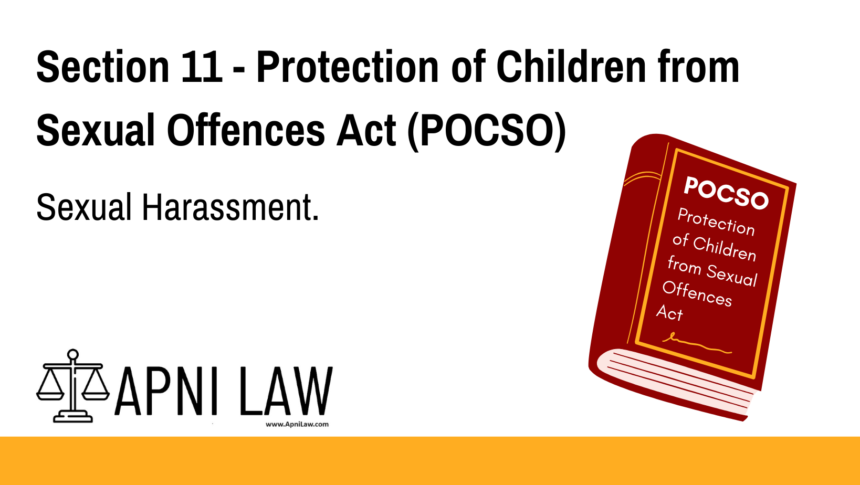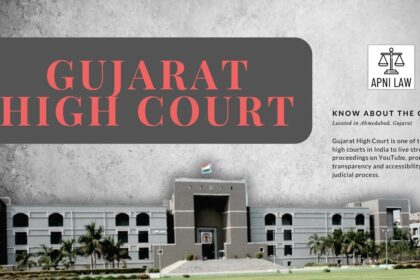Code: Section 11 POCSO Act
A person is said to commit sexual harassment upon a child when such person with sexual intent,—
(i) utters any word or makes any sound, or makes any gesture or exhibits any object or part of body with the intention that such word or sound shall be heard, or such gesture or object or part of body shall be seen by the child; or
(ii) makes a child exhibit his body or any part of his body so as it is seen by such person or any other person; or
(iii) shows any object to a child in any form or media for pornographic purposes; or
(iv) repeatedly or constantly follows or watches or contacts a child either directly or through electronic, digital or any other means; or
(v) threatens to use, in any form of media, a real or fabricated depiction through electronic, film or digital or any other mode, of any part of the body of the child or the involvement of the child in a sexual act; or
(vi) entices a child for pornographic purposes or gives gratification therefor.
Explanation.—Any question which involves “sexual intent” shall be a question of fact.
Explanation of Section 11 POCSO Act
Section 11 of the Protection of Children from Sexual Offences Act (POCSO) addresses sexual harassment of children. It defines a range of actions as sexual harassment, all involving sexual intent toward a child. These actions, whether through direct interaction or digital means, are prohibited and punishable under the law.
Key Provisions of Section 11 POCSO:
- Sexual Intent:
- The section defines actions committed with sexual intent as harassment, making it clear that even verbal or visual gestures can be considered sexual harassment.
- Harassing Behavior:
- The law covers various forms of harassment, such as verbal harassment (e.g., making sexual comments), visual harassment (e.g., showing inappropriate objects), and digital harassment (e.g., contacting or following a child via electronic means).
- Pornographic Exploitation:
- The law specifically prohibits showing or enticing a child for pornographic purposes in any form, whether through media, digital content, or other forms.
Illustration of Section 11 POCSO
Example 1: Verbal Harassment
A person utters a sexually suggestive word or makes an inappropriate gesture with the intent that it should be heard or seen by the child. This act falls under Section 11, and the offender may face legal consequences for sexual harassment.
Example 2: Digital Harassment
An individual repeatedly contacts a child via social media, sending inappropriate messages or content with sexual intent. This falls under Section 11 as harassment using digital means.
Common Questions & Answers on Section 11 POCSO
1. What is sexual harassment of a child under Section 11 of the POCSO Act?
- Section 11 defines sexual harassment as any act done with sexual intent, including verbal, visual, or digital harassment of a child. It also includes showing pornography or enticing the child for such purposes.
2. How does POCSO protect children from sexual harassment?
- POCSO protects children by criminalizing a wide range of harassing behaviors, including inappropriate gestures, verbal abuse, and digital harassment. The law holds offenders accountable for their actions and ensures the child’s safety.
3. What kind of actions can be considered sexual harassment under Section 11?
- Actions like making sexual gestures or sounds, showing pornographic content, and contacting the child inappropriately, either in person or digitally, are all considered sexual harassment under Section 11.
4. Does Section 11 apply to online harassment as well?
- Yes, Section 11 covers digital harassment and any kind of electronic or online interaction with sexual intent toward a child.
Conclusion
Section 11 of the Protection of Children from Sexual Offences Act (POCSO) lays down clear guidelines regarding sexual harassment of children. It criminalizes a variety of sexualized behaviors, including verbal, visual, and digital harassment. By imposing penalties for these actions, POCSO aims to protect children from sexual exploitation and harassment in all forms.
For more information on POCSO or to learn about its provisions, visit ApniLaw.








